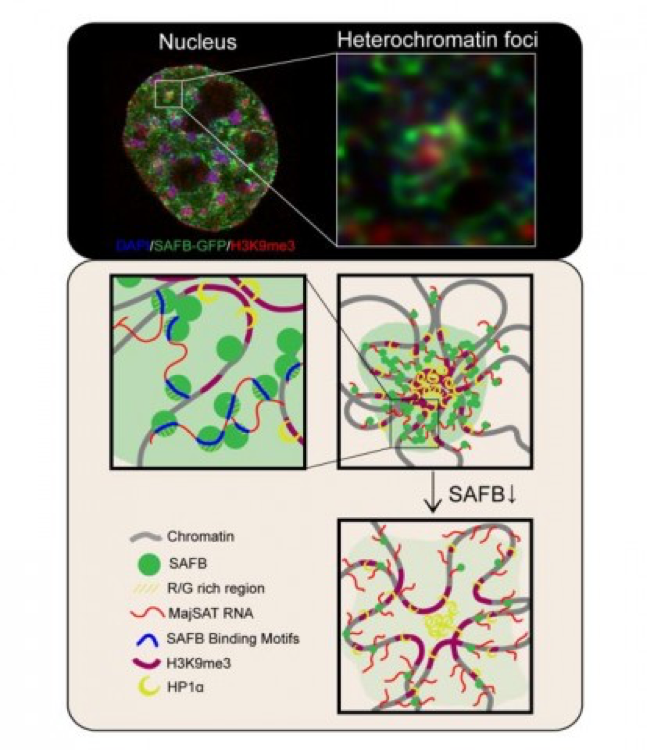In eukaryotic cells, chromatin is found in two states: euchromatin (typically transcriptionally active) and heterochromatin (typically transcriptionally inactive), which are respectively polymerized into 3D structures called A-type or B-type Compartments. Chromatin then forms higher-order architecturessuch as topologically associating domains (TADs) and chromatin loops to regulate genome functions. Pericentromeric heterochromatin is the most typical constitutive heterochromatin, but the mechanism underlying its higher-order architecture remains poorly understood.
Recently, a multidisciplinary research team led by Wen Bo, with members from the Key Laboratory of Metabolism and Molecular Medicine of the Ministry of Education and the School of Basic Medical Sciences, Fudan University, has proved that, by using super-resolution microscopy, as well as 3D genomic, biochemical and biophysical assays, the nuclear matrix (NM)-associated protein SAFB can modulate higher-order chromatin structures.
The findings were reported in the paper entitled “The Nuclear Matrix Protein SAFB Cooperates with Major Satellite RNAs to Stabilize Heterochromatin Architecture Partially through Phase Separation”, published in Molecular Cell(IF=14.54) on October 30, 2019.
It is found that SAFB is located adjacent to pericentromeric heterochromatin and the depletion of SAFB leads to the decondensation of pericentromeric heterochromatin. SAFB, together with MajSAT RNAs, forms phase separation to sustain the higher-order organization of heterochromatin. In addition, depletion of SAFB leads to changes in 3D genome organization, including a decrease in genomic compartmentalization, a decrease of boundary strength of TADs and a reduction in chromatin-lamina interactions to some extent. The research proves that these changes could result from the decondensation of pericentromeric heterochromatin.
The stability of heterochromatin is critical for various biological processes such as germ cell generation, embryogenesis and stem cellular differentiation. Its disorder is closely correlated with diseases such as tumors. This research reveals the integrated roles of NM-associated proteins and repeat RNAs in the 3D organization of heterochromatin, which may shed light on the molecular mechanisms of heterochromatin organization.
Huo Xiangru, Ph.D. candidate at theSchool of Basic Medical Sciences, Fudan University, is the first author of this paper. Prof. Wen Bo is the corresponding author. Among the other authors are Ji Luzhang, Zhang Yuwen, Lv Pin, etc.






